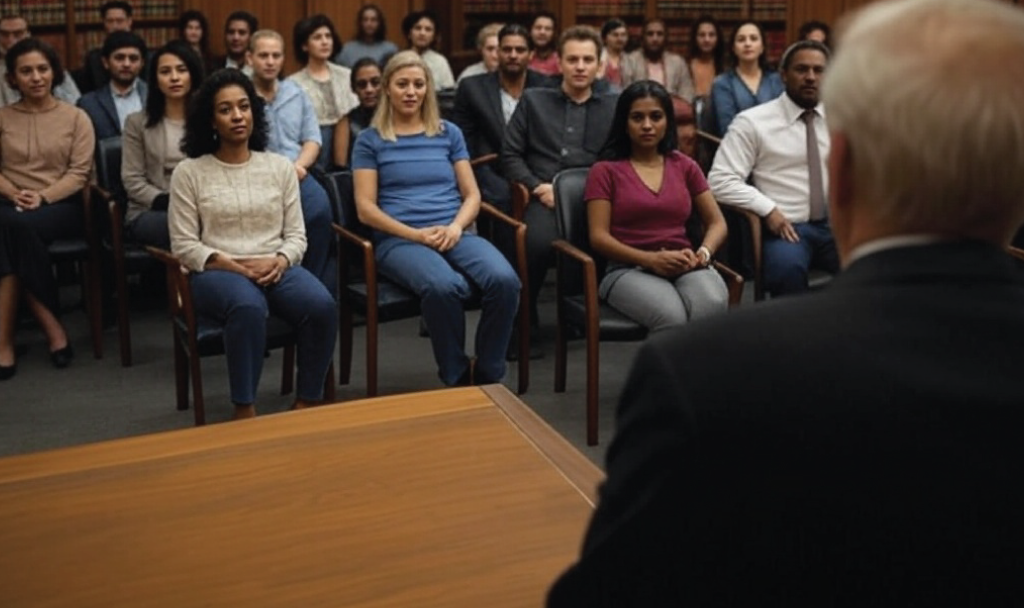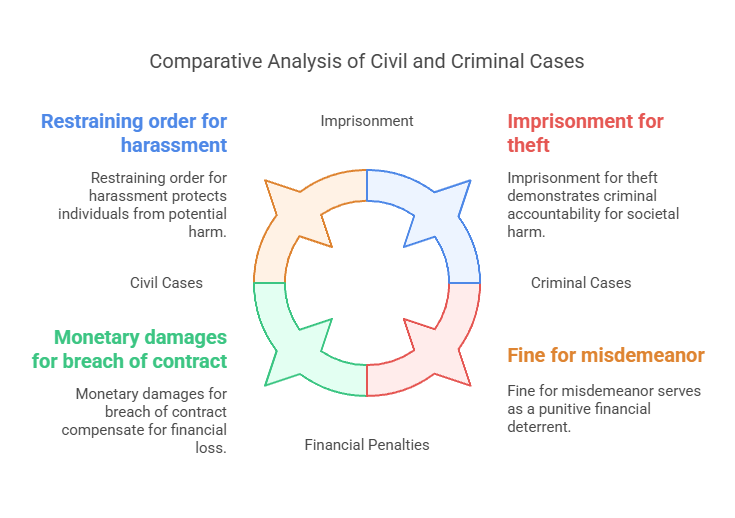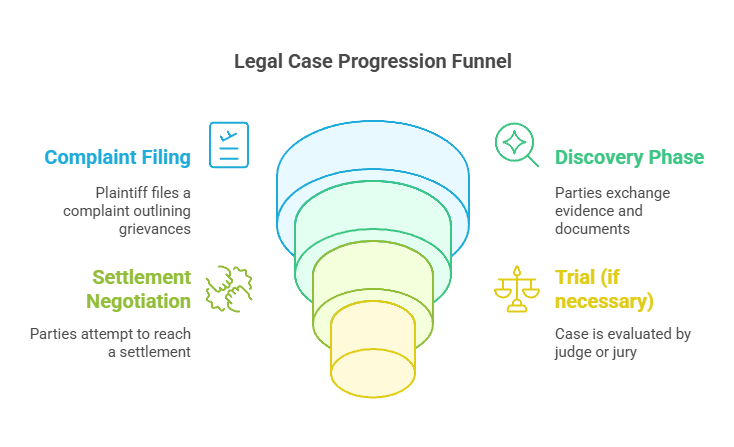Understanding Civil vs. Criminal Cases: Key Differences Explained

Civil vs. Criminal Cases: A Fundamental Overview
Distinguishing between civil and criminal cases is essential for anyone navigating the legal system. While both types of cases resolve disputes, their purposes, procedures, and outcomes differ significantly. Civil cases typically involve conflicts between private parties, such as individuals or organizations, where one party seeks compensation or specific actions. Conversely, criminal cases address violations of public laws, with the government prosecuting individuals accused of harming society. For instance, a breach of contract dispute would fall under civil law, while robbery charges would be criminal.
- Civil Cases:
Civil cases arise when there is a dispute between private parties—individuals, businesses, or organizations—over rights, obligations, or compensation. The primary goal in civil litigation is to resolve the conflict by providing remedies such as monetary damages, injunctions (court orders to do or refrain from doing something), or specific performance (requiring a party to fulfill their contractual obligations). For example, if someone breaches a contract by failing to deliver goods or services as promised, the aggrieved party may file a civil lawsuit seeking financial restitution or enforcement of the agreement. - Criminal Cases:
Criminal cases, on the other hand, involve violations of public laws that are considered offenses against society as a whole, even if the harm is directed at an individual. These cases are brought by the government—local, state, or federal authorities—against individuals accused of committing crimes like theft, assault, fraud, or murder. The purpose of criminal law is to punish offenders, deter future wrongdoing, protect society, and uphold justice. For instance, if someone commits robbery, they are prosecuted by the state, not the victim, because the act disrupts societal order and violates established legal norms.
Key Differences Between Civil and Criminal Cases
Parties Involved
In civil cases, the parties involved are typically private entities, such as individuals, businesses, or organizations, who are seeking resolution for disputes that directly affect them. The plaintiff, or the party initiating the lawsuit, files a legal complaint against the defendant, alleging wrongdoing and seeking remedies such as monetary damages, specific performance, or injunctions to prevent certain actions. These cases often revolve around personal grievances, contractual obligations, or property disputes. In contrast, criminal cases involve the state or government (represented by a prosecutor) charging an individual or entity with violating public laws. While victims of crimes, such as assault survivors or those affected by theft, may participate in the process as witnesses or provide victim impact statements, they do not have control over the prosecution itself, which is managed entirely by the state. For a deeper dive into high-profile criminal proceedings and how these dynamics play out in real-world scenarios, explore our analysis of famous international legal cases.
Burden of Proof
The burden of proof is another critical distinction between civil and criminal cases and plays a pivotal role in determining the outcome of legal proceedings. In civil cases, the burden of proof is based on a “preponderance of the evidence,” which means the plaintiff must demonstrate that their claim is more likely true than not—essentially tipping the scales slightly in their favor. This standard reflects the nature of civil litigation, where the focus is on resolving private disputes rather than imposing severe penalties. On the other hand, criminal cases demand a much higher standard: “beyond a reasonable doubt.” This stringent threshold ensures that defendants are not wrongfully convicted and that there is near certainty of guilt before any punishment is imposed. The difference in these standards underscores the gravity of criminal convictions compared to civil judgments. Our article on the role of precedent in legal cases explains how past rulings influence these standards and shape the way courts interpret and apply them in modern cases.
Penalties and Outcomes
The penalties and outcomes in civil and criminal cases differ significantly, reflecting the distinct purposes of each type of law. In civil cases, penalties often involve financial compensation awarded to the plaintiff, such as monetary damages for losses incurred due to the defendant’s actions. Courts may also issue equitable remedies, such as restraining orders to stop harmful behavior or court orders to enforce contracts. These outcomes are designed to resolve disputes and restore balance between the parties involved. In contrast, criminal penalties are far more severe and can include fines, probation, imprisonment, or even capital punishment in jurisdictions where it is permitted. Beyond immediate consequences, criminal convictions result in a permanent criminal record, which can have long-lasting effects on an individual’s life, including limitations on employment opportunities, housing options, and civil rights like voting or firearm ownership. To understand how recent rulings continue to shape the scope and severity of penalties in both civil and criminal contexts, review our breakdown of 2023 Supreme Court rulings.

#image_title
Legal Processes: How Civil and Criminal Cases Unfold
Civil Case Procedure
Civil lawsuits follow a structured process that begins when the plaintiff files a formal complaint outlining their grievances and the relief they are seeking from the defendant. Once the complaint is filed, both parties engage in a phase known as discovery , during which they exchange relevant evidence, documents, and depositions to build their respective cases. This step is critical for ensuring transparency and fairness in the proceedings. After discovery, many civil disputes are resolved through negotiations or alternative dispute resolution methods like mediation or arbitration, as these approaches often save time and reduce legal expenses for both parties. However, if a settlement cannot be reached, the case proceeds to trial, where a judge or jury evaluates the evidence and renders a decision. It’s worth noting that the vast majority of civil cases—such as personal injury claims, contract disputes, or property disagreements—are settled out of court before reaching trial, as parties typically prefer to avoid the unpredictability and costs associated with prolonged litigation. For example, personal injury claims often resolve through negotiated settlements rather than enduring lengthy and costly court battles.
Criminal Case Procedure
Criminal cases follow a more formalized and rigorous procedure, beginning with either an arrest or a grand jury indictment, depending on the severity of the alleged offense. Following the initial charges, the defendant is brought before a judge for an arraignment, where they are formally informed of the charges against them and asked to enter a plea—guilty, not guilty, or no contest. If the defendant pleads not guilty, the case moves forward, and bail hearings may be held to determine whether the accused can be released pending trial. During the trial phase, both the prosecution and defense present their cases through rigorous evidence presentation, witness testimonies, and cross-examinations. The Sixth Amendment guarantees the defendant’s right to legal counsel, a principle famously upheld in landmark cases like Gideon v. Wainwright , as highlighted in our analysis of landmark legal cases like Gideon v. Wainwright. If the defendant is convicted, sentencing occurs in a separate hearing, where penalties such as fines, probation, or imprisonment are determined. Appeals are common in criminal cases, particularly when severe penalties are involved, as defendants seek to challenge procedural errors or constitutional violations. These appeals can extend the legal process significantly, underscoring the complexity and gravity of criminal proceedings.

#image_title
Real-World Examples of Civil and Criminal Overlap
Some incidents trigger both civil and criminal proceedings. For instance, a drunk driving accident might lead to criminal charges (e.g., DUI) and a civil lawsuit for victim compensation. Similarly, a celebrity acquitted of criminal assault might still face a civil suit for damages. These overlaps underscore the importance of understanding both legal realms. To see how historical cases shaped these dynamics, read our piece on privacy law evolution.
Why Legal Representation Matters
Navigating civil or criminal cases without legal expertise can jeopardize outcomes. Civil attorneys negotiate settlements and draft airtight arguments, while criminal defense lawyers challenge evidence and protect constitutional rights. Public defenders assist indigent defendants in criminal cases, but hiring specialized counsel often yields better results. Whether facing a lawsuit or criminal charges, professional guidance ensures fair treatment under the law.
The Societal Impact of Legal Distinctions
Civil and criminal law collectively uphold societal order and individual rights. Civil law resolves private disputes, fostering economic stability and contractual trust. Criminal law deters harmful behavior, safeguarding public safety. By maintaining these separate frameworks, the legal system balances personal accountability with communal welfare. Understanding these differences empowers individuals to make informed decisions when encountering legal challenges.



